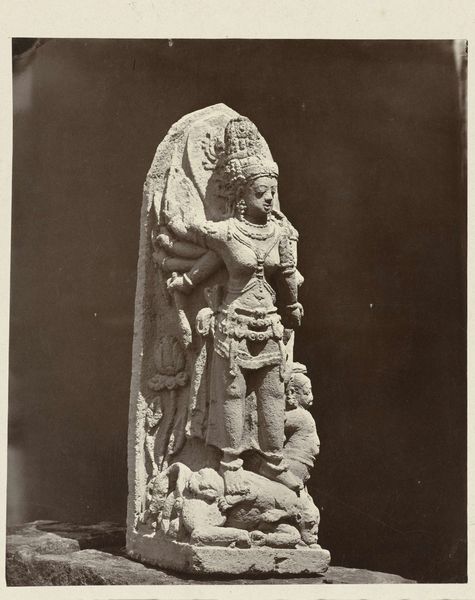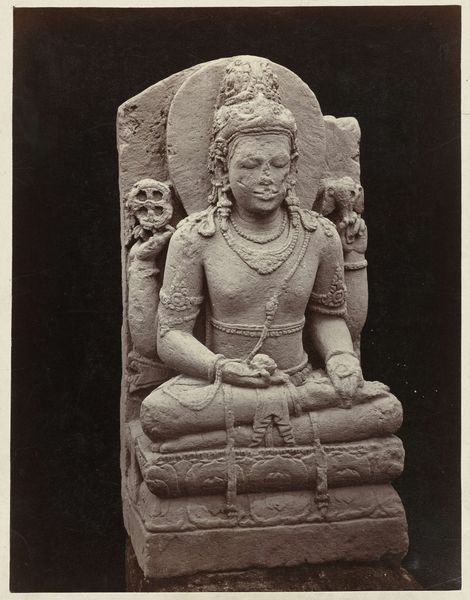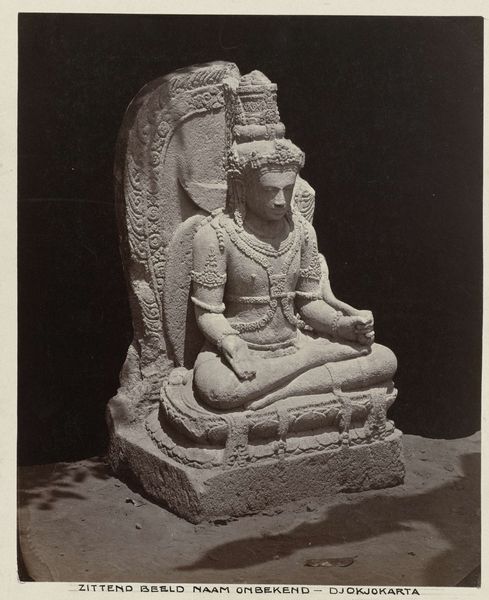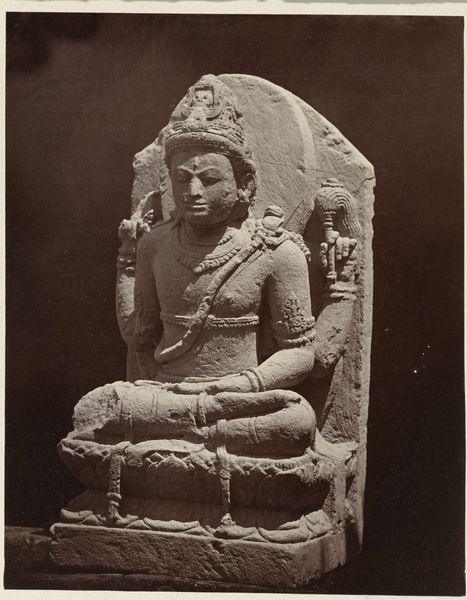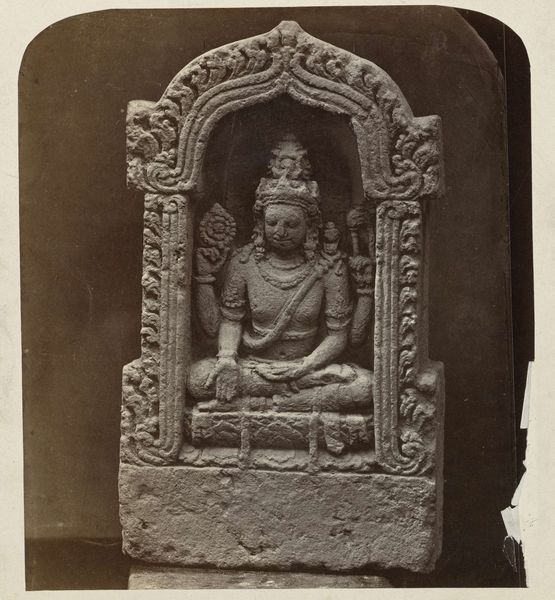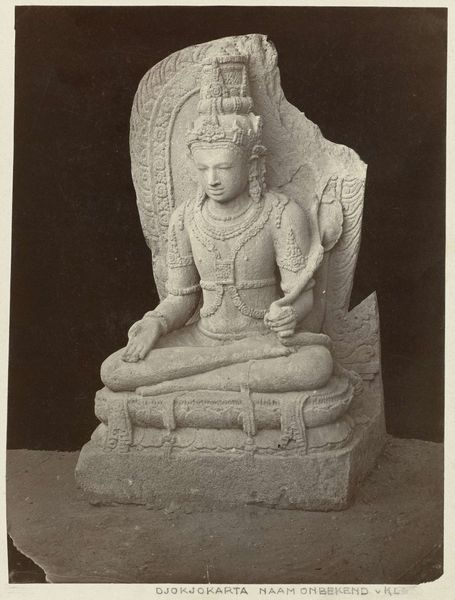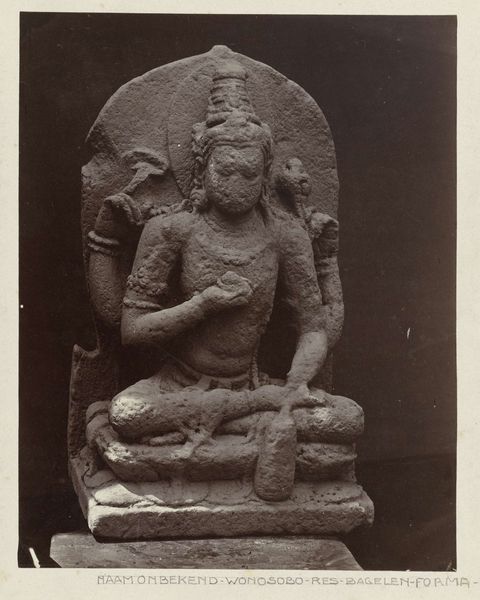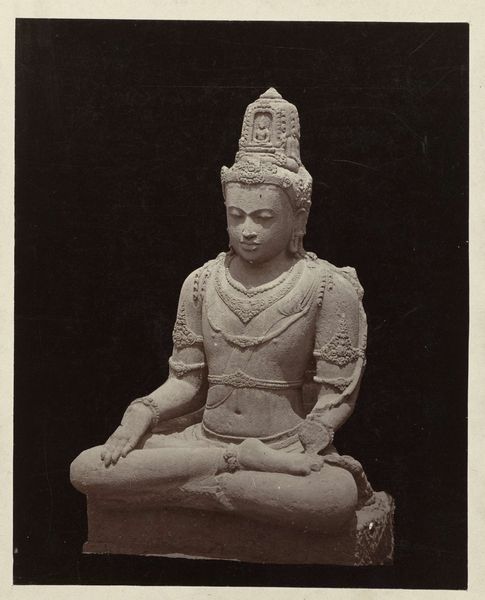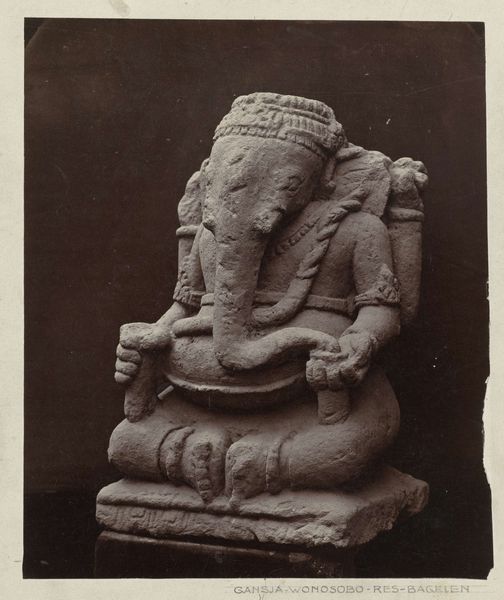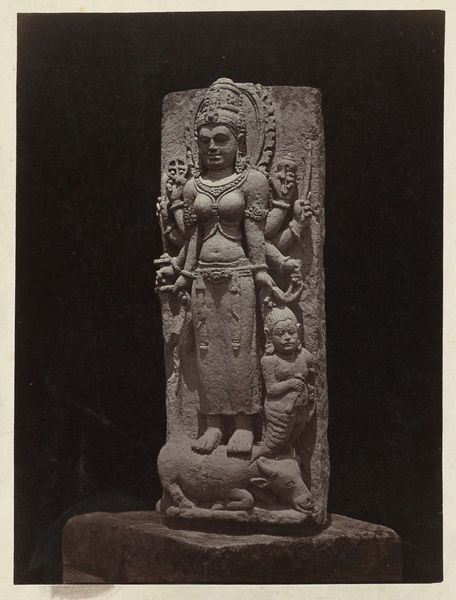
Four-armed deification stele (King Kritarajasa?) from Sumberjati showing features of both Vishnu and Shiva. Blitar, Blitar district, East Java province, 14th century, Indonesia Possibly 1867 - 1868
0:00
0:00
metal, relief, sculpture
#
metal
#
sculpture
#
asian-art
#
relief
#
figuration
#
ancient-mediterranean
#
sculpture
#
islamic-art
#
statue
Dimensions: height 331 mm, width 254 mm
Copyright: Rijks Museum: Open Domain
This stele, likely depicting King Kritarajasa, was carved from stone in 14th century East Java, Indonesia. The material, likely volcanic rock, dictated the carver’s approach. Its relative softness allowed for intricate details, yet demanded careful handling to avoid breakage. Consider the labor involved in quarrying, transporting, and carving this object. It would have required a team of skilled artisans, working with hand tools to slowly reveal the figure within the stone. The creation of this stele was undoubtedly a significant investment of time and resources, reflecting the power and prestige of the patron. The syncretic imagery—combining features of both Vishnu and Shiva—speaks to the complex religious landscape of the time. The stele isn't just a sculpture; it's a record of cultural exchange, religious belief, and the skilled labor of its makers. Appreciating the stele means understanding the hands that shaped it and the social forces that brought it into being.
Comments
No comments
Be the first to comment and join the conversation on the ultimate creative platform.

